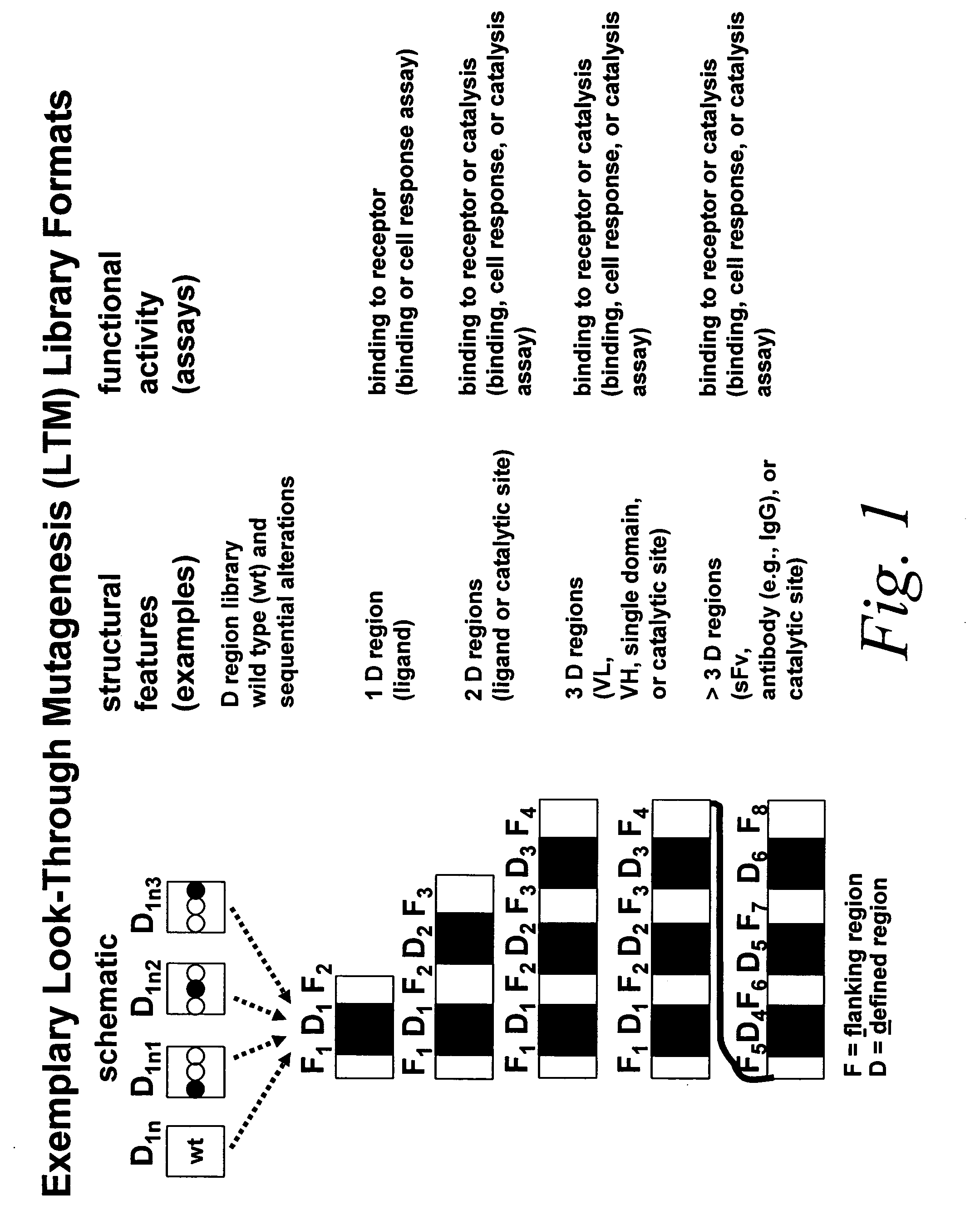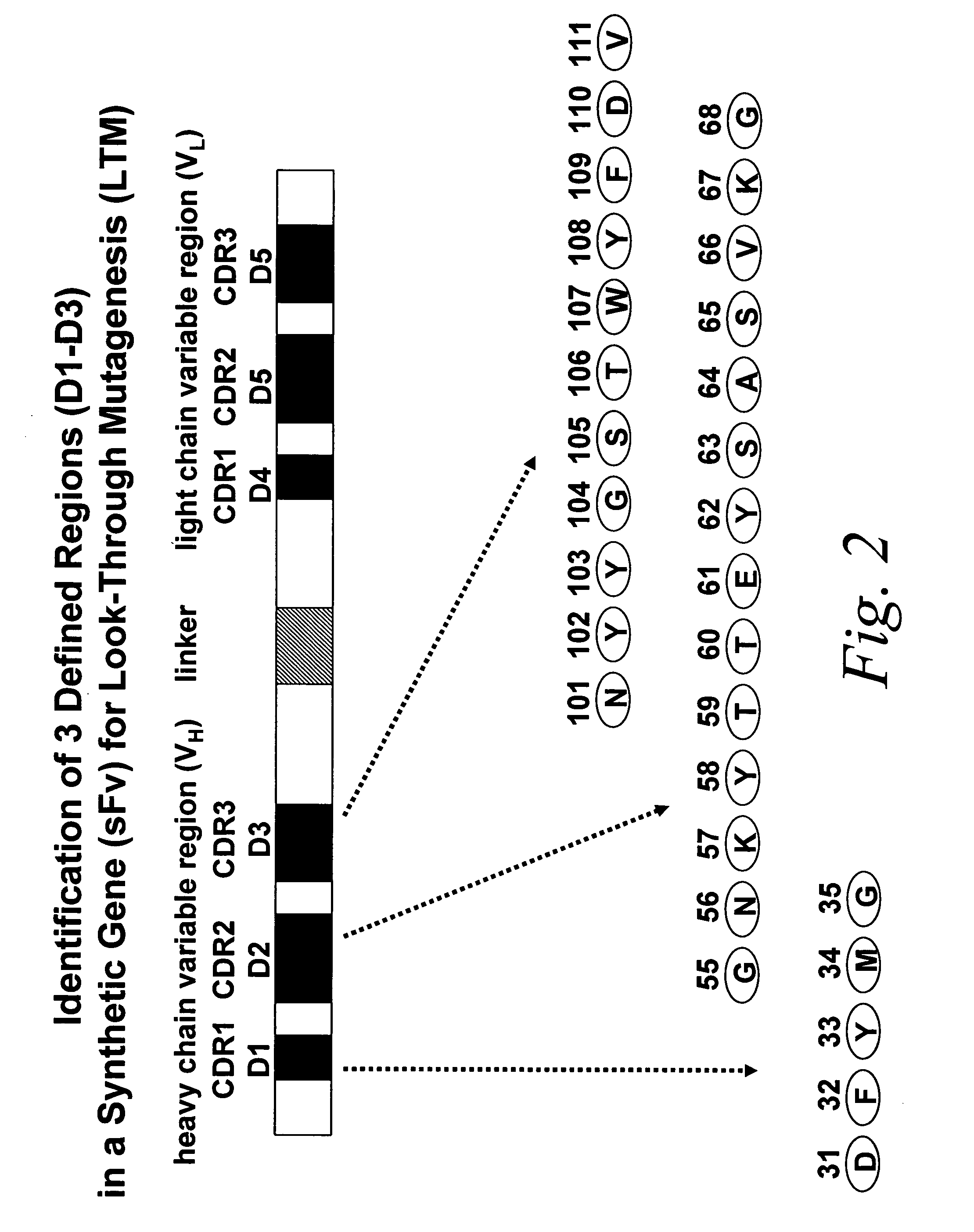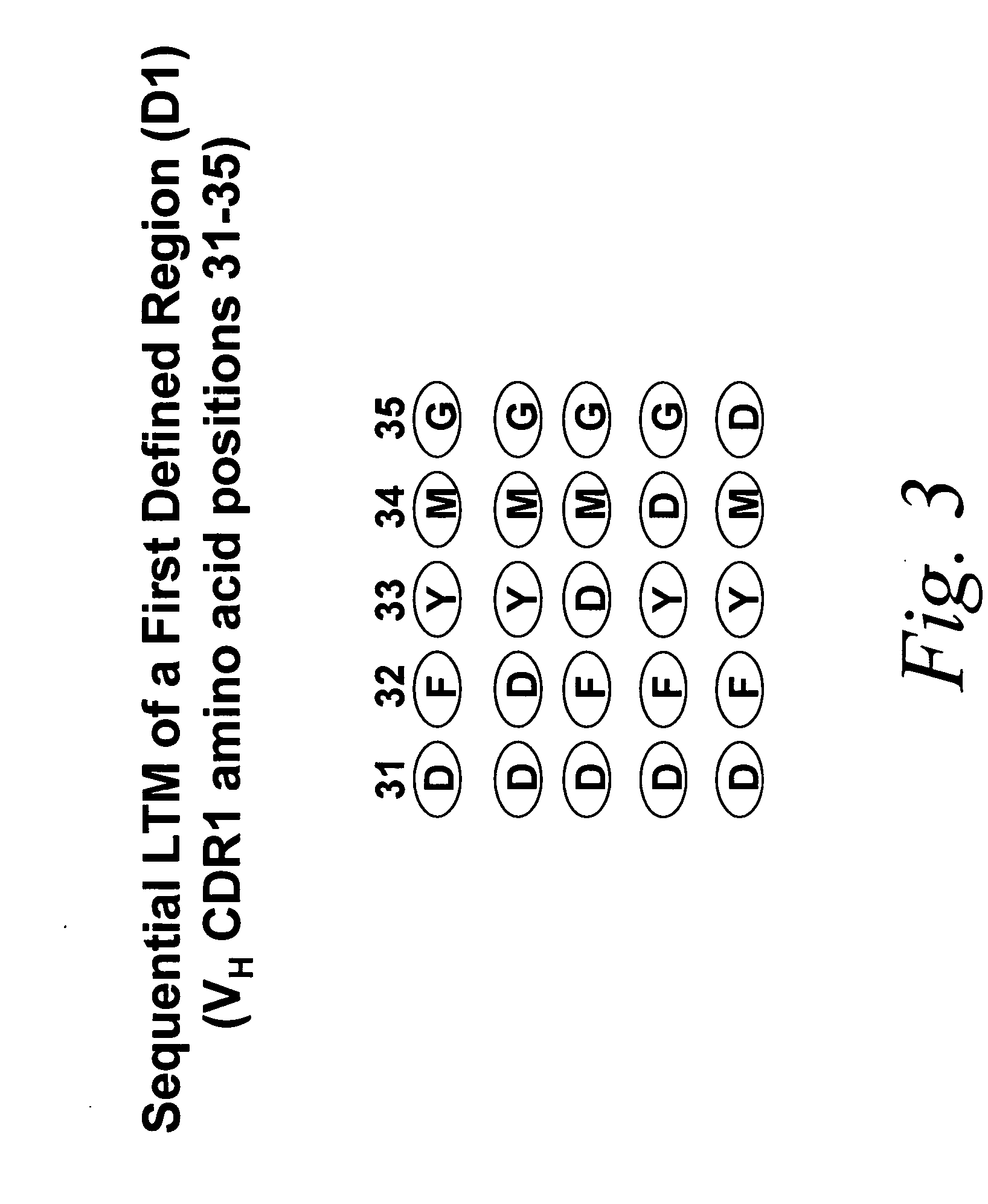Look-through mutagenesis
a mutagenesis and look-through technology, applied in the field of look-through mutagenesis, can solve the problems of preventing the capacity to meaningfully select a desired candidate, limiting the number of polypeptide analogs required, and limiting the selection of mutants. the effect of mutagenesis and the ability to muta
- Summary
- Abstract
- Description
- Claims
- Application Information
AI Technical Summary
Benefits of technology
Problems solved by technology
Method used
Image
Examples
example 1
Look-Through Mutagenesis of Three Defined Regions in an Antigen Binding Molecule
[0092] In this example, the look-through mutagenesis of three CDRs of an antibody to improve binding and proteolysis of a substrate is described.
[0093] In particular, the “look-through” mutagenesis of three complementarity determining regions (CDRS) of a monoclonal antibody is performed. CDR1, CDR2, and CDR3 of the heavy chain variable region (VH) are defined regions selected for look-through mutagenesis. For this embodiment, the predetermined amino acids selected are the three residues of the catalytic triad of serine proteases, Asp, His and Ser. Asp is selected for VH CDR1, His is selected for VL CDR2, and Ser is selected for VH CDR3. The selection of these three predetermined amino acids allows for the use of a convenient protease assay in order to detect when the three residues are positioned correctly to exhibit a functional activity, i.e., proteolysis of a test substrate.
[0094] An exemplary anti...
example 2
Look-Through Mutagenesis of Six Defined Regions in an Antigen Binding Molecule
[0097] In this example, the look-through mutagenesis of all six CDRs of an antibody to improve binding and proteolysis of a substrate is described.
[0098] In particular, a “look-through” mutagenesis of all six of the hypervariable regions or complementarity determining regions (CDRs) of the above mentioned model antibody (MCPC 603) is performed. In this example, “look-through” mutagenesis is carried out from two to three times with a different amino acid in a given region or domain. For example, Asp, Ser and His are sequentially walked-through the heavy and light chains as shown in FIG. 10.
[0099] Mutagenesis of noncontiguous residues within a region can be desirable if it is known, or if one can deduce, that certain residues in the region will not participate in the desired function. In addition, the number of analogs can be minimized. Other considerations in selecting the predetermined amino acid and th...
example 3
Look-Through Mutagenesis of Anti-TNF Binding Molecules to Improve Function
[0103] In this example, the look-through mutagenesis of an anti-TNF antibody to improve binding is described.
[0104] In particular, the “look-through” mutagenesis of all six of the hypervariable regions or complementarity determining regions (CDRs) of two different anti-TNF antibodies is performed. Anti-TNF antibodies have general application in the treatment of immune disease in patients having inappropriate levels of the ligand TNF (tumor necrosis factor). Two commercially available anti-TNF antibodies exist. For convenience in performing look-mutagenesis and subsequent screening, the variable light and heavy chain regions (see SEQ ID NOs: 2-4) of these antibodies were converted to a single chain format using a poly Gly-Ser linker (see FIG. 15). The defined regions selected for look through mutagenesis with a predetermined amino acid are identified by the presence of a black bar as shown in FIG. 15. These d...
PUM
| Property | Measurement | Unit |
|---|---|---|
| structure | aaaaa | aaaaa |
| fluorescent | aaaaa | aaaaa |
| binding affinity | aaaaa | aaaaa |
Abstract
Description
Claims
Application Information
 Login to View More
Login to View More - R&D
- Intellectual Property
- Life Sciences
- Materials
- Tech Scout
- Unparalleled Data Quality
- Higher Quality Content
- 60% Fewer Hallucinations
Browse by: Latest US Patents, China's latest patents, Technical Efficacy Thesaurus, Application Domain, Technology Topic, Popular Technical Reports.
© 2025 PatSnap. All rights reserved.Legal|Privacy policy|Modern Slavery Act Transparency Statement|Sitemap|About US| Contact US: help@patsnap.com



